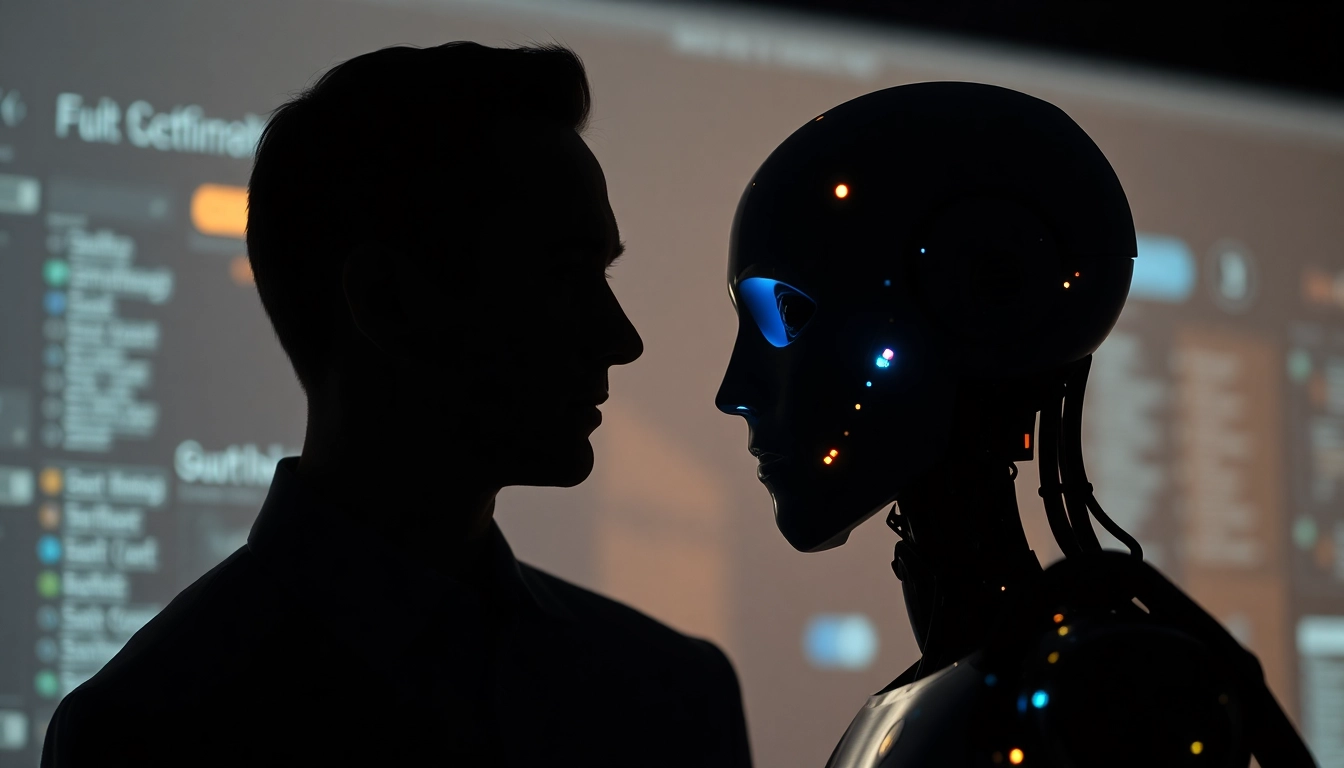Understanding the Human or Not Game and Its Purpose
In an era where artificial intelligence continues to evolve at an unprecedented pace, the ability to distinguish human interaction from machine-generated responses has become both a challenge and an essential skill. The human or not game represents a groundbreaking approach to testing this very capability. As a social Turing challenge, it invites users to engage in brief, real-time conversations with anonymous entities—either human or AI—and assess the nature of their interlocutor. This game is more than just a form of entertainment; it serves as a vital tool in understanding AI’s capabilities, limitations, and the human instinct for discernment.
What Is the Human or Not Social Turing Challenge?
The Human or Not challenge is inspired by the classic Turing Test, pioneered by mathematician Alan Turing, which evaluates a machine’s ability to exhibit behavior indistinguishable from that of a human. However, this game emphasizes practical, everyday interactions—such as chat exchanges—rather than abstract thought experiments. Participants are asked to converse with AI or humans for a strictly timed two-minute interval, then make a judgment on whether their conversation partner is a real person or an artificial intelligence. This format brings the challenge into real-world contexts, emphasizing skills like critical thinking, intuition, and pattern recognition.
The Significance of Spotting AI in Daily Interactions
Why does it matter whether we can tell if we’re interacting with a human or an AI? The answer lies in the increasing integration of AI into our daily lives—through customer service bots, virtual assistants, social media interactions, and more. Being able to identify AI responses helps users maintain transparency, make informed decisions, and recognize potential manipulations. Moreover, with AI systems mimicking human conversation with growing sophistication, the game helps users develop a keen sense of awareness, fostering a more conscious engagement with technology.
Key Features and How It Shapes AI Awareness
The Human or Not platform incorporates several core features that amplify its educational and entertainment value:
- Real-time interactions: Engaging in live conversations with both AI and humans.
- Instant feedback: Making immediate judgments after each chat session enhances awareness and learning.
- Progress tracking: Users can monitor their success rates over time, helping refine their detection skills.
- Community engagement: Sharing insights, tips, and experiences fosters collective learning.
These features not only make the game engaging but also serve as a practical platform to understand AI behavior, improve human judgment, and prepare users for future AI interactions in various professional and personal contexts.
How to Play Human or Not Effectively
Step-by-Step Guide to Participating in the Game
- Access the platform: Visit the Human or Not website via desktop or mobile device. The game is fully responsive for seamless gameplay across devices.
- Initiate a conversation: Click the ‘Start Game’ button to be paired with a conversation partner—either human or AI.
- Engage in dialogue: Communicate naturally for two minutes, asking questions, sharing opinions, or responding spontaneously.
- Make your guess: At the end of the interaction, analyze cues from responses like language nuance, emotional expression, and consistency to determine whether you’re speaking with a human or AI.
- Submit your verdict: Confirm whether you believe the partner is human or AI, then see if your judgment was correct.
Tips for Recognizing AI and Human Cues
Detecting AI responses requires keen observation for subtle patterns and anomalies. Here are key tips:
- Consistency and context: Humans often introduce complex, contextually rich responses; AI might produce slightly generic or overly logical outcomes.
- Emotional nuance: Human responses tend to show emotional depth, irony, humor, or subtlety that AI may struggle to replicate convincingly.
- Response speed and style: AI may respond instantly with uniformly structured replies, whereas humans have natural pauses and varied sentence structures.
- Handling complex or ambiguous questions: Humans often interpret or elaborate, while AI might give literal or incomplete answers.
Maximizing Your Success Rate During Conversations
To improve your detection skills:
- Ask open-ended, emotionally infused, or humor-based questions to reveal deeper human traits.
- Observe response timing; abrupt or overly rapid replies may indicate AI involvement.
- Introduce complex scenarios or vague statements to test comprehension and contextual understanding.
- Remain aware of language patterns; odd phrasing or repetitive responses can be telltale signs.
- Practice regularly to develop an intuitive feel for anomalies or human-like nuances in responses.
Why Engaging with Human or Not Boosts Your AI Discernment
Enhancing Critical Thinking and Observation Skills
The core of the game revolves around sharp perception—carefully analyzing responses, detecting inconsistencies, and making quick judgments. Regular participation hones cognitive processes such as pattern recognition, contextual comprehension, and emotional perception. This exercise not only boosts your ability to differentiate AI from humans but also elevates your overall critical thinking, essential in an AI-driven world.
Contributing to AI Transparency and Awareness
By actively engaging with such platforms, users contribute to broader societal awareness regarding AI’s capabilities and limitations. Recognizing AI-produced responses fosters transparency, encouraging ethical AI development and deployment. It also informs users about AI’s role in communication environments, reducing susceptibility to misinformation and manipulation.
Amplifying User Engagement and Knowledge
The interactive nature of Human or Not stimulates curiosity—prompting users to learn more about AI technology, language models, and machine learning principles. Educational insights derived from gameplay deepen understanding, making users more informed digital citizens capable of navigating an AI-saturated landscape confidently.
Technology Behind Human or Not and Its Impact
State-of-the-Art AI Technologies Used
The platform leverages advanced AI technologies such as GPT-4, combined with custom algorithms, to generate human-like responses or simulate human conversation. These models are trained on vast datasets, including nuanced linguistic, emotional, and contextual information, enabling them to produce responses that are increasingly difficult to distinguish from humans.
Ensuring Privacy and Safety in Gameplay
User privacy and safety are paramount. Conversations are conducted anonymously, with no personally identifiable information stored or shared without explicit consent. The platform follows stringent privacy policies, encrypts data, and ensures compliance with modern data protection standards, fostering a safe environment for experimentation and learning.
Future Developments and Continuous Improvements
The developers continuously integrate new AI models, improve detection algorithms, and expand the game’s features based on user feedback. Future updates aim to increase realism, introduce more nuanced conversation topics, and develop AI models capable of more context-aware interactions, thus sharpening users’ detection skills further.
Joining the Community and Improving Your Skills
Sharing Tips and Experiences with Other Players
Community forums, social media groups, and in-game leaderboards provide platforms for players to exchange strategies, share interesting encounters, and celebrate successes. Learning from others’ insights accelerates skill development and enriches the overall experience.
Participating in Discussions and Feedback
Feedback from users drives platform enhancements. Engaging with the developers by suggesting features, reporting challenges, or sharing success stories helps tailor the game to evolving AI landscapes and user preferences.
Regular Challenges to Test Your AI Detection Abilities
Frequent updates, themed challenges, and timed quizzes keep the experience fresh and test specific detection skills. These exercises encourage continuous learning, ensuring players stay sharp in discerning AI behaviors amid advancing technologies.


















